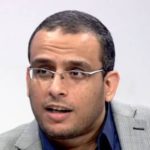Executive Summary
- The disruption of the Raba‘a sit-in protest in August 2013 came as a major shock to the Muslim Brotherhood Group, disrupting the Group’s leadership structure, particularly following the arrests of many of its leaders and figureheads. However, the Group was by no means incapacitated, nor did it collapse. Rather, it managed to continue conducting demonstrations and protests in a spontaneous and decentralized manner. This carried on until the establishment of the ‘Higher Administrative Committee’ which assumed legitimate leadership in February 2014.
- In August 2014, the ‘Specific Operations’ plan was passed, which allowed for the organized use of violence in order to defend protests, and to disrupt police and governing authorities. It was adopted with emphasis on targeting permitted only in specific cases. The aim of this plan was similar to the Six-Month Plan enacted just prior, namely to work towards bringing about change to the political scene, and to further alleviate the widespread violence and exclusion in a manner that would pave the way for democracy to be restored.
- At the end of 2014, a number of disagreements emerged between members of the Muslim Brotherhood’s Higher Administrative Committee regarding the nature of the Group’s management and strategy. These differences were not divisive at first, until they reached the governing mechanisms and higher authorities guiding the Group itself .
- In May 2015, conflict openly erupted within the Muslim Brotherhood, with the Group’s deputy leader Dr. Mahmoud Ezzat dissolving the first Higher Administrative Committee headed by Dr. Mohamed Kamal. The latter rejected these decisions, dismissing them because they came from someone he claimed had no legitimate authority. Dr. Mahmoud Ezzat’s moves coincided with the sharp increase in state security crack-downs associated with the appointment of Magdy Abdel Ghaffar as the Egyptian Minister of Interior.
- Due to widespread distrust within the Muslim Brotherhood, the discord was exacerbated with accusations of deviancy, and the undecided nature of the regulatory mechanism they would appeal to. The old guard firmly believed that the Group’s legitimacy was established in Dr. Mahmoud Ezzat, Acting General Guide inside Egypt, while Mr. Ibrahim Mounir was Head of the Egyptian Association Abroad. For the old guard, this was key to understanding and interpreting its decisions. On the other hand, the opposing party believed that the first step was to appeal to the Muslim Brotherhood in its entirety by holding elections, which would produce consensus on, and entrench legitimacy in the leadership of the Group. The two views clearly could not co-exist.
- In December 2015, an announcement was made by Dr. Mohamed Abdel Rahman, the new Chairman of the Higher Administrative Committee, delegating him with Dr. Mahmoud Ezzat’s decision to dissolve the second Higher Administrative Committee and initiate procedures to investigate and suspend associates of Dr. Kamal’s administration. At the same time, the office of the Egyptian Association Abroad in London announced the dismissal of Mohamed Montaser and the appointment of Talaat Fahmy as a spokesman for the Group. This was followed by the announcement of a new official website, and social media pages for the Group.
- Three key factors led to the escalation of the dispute, and the increased difficulty in containing it between old leaders and the new: Firstly, the inability to adopt new strategies to achieve any tangible political objective. Secondly, the unprecedented escalation of security crackdowns on the Group, which often took the form of arrests, executions or being forced into foreign exile, and weakened its leadership. Finally, the absence of strategic vision during planning and evaluation, adding to limitations affecting procedures and operations.

 Yasser Fathy
Yasser Fathy